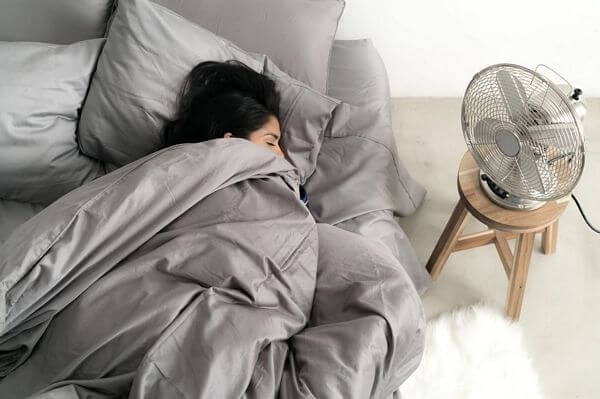Here we are discussing bacteria in bed sheets and other bedding.
We are talking about how long bacteria survives in your bed.
In order to understand the complete picture of how bacteria in your bed affects you, we need to not only know how much bacteria there is, but how long the bacteria survives, and how that can affect your overall sleep health.
While it’s true that bacteria doesn’t survive indefinitely on fabrics, that doesn’t mean that the bacteria will just after a month suddenly disappear.
We are constantly shedding bacteria off of our bodies, which is known as microbial shedding.
So overtime without washing our sheets, even as older bacteria begins to die, new ones are always accumulating.
So there’s a continuous cycle, and this continues to compound over time.
After a month of not washing your sheets, you’ll have something like 11 or 12 million bacteria living there.
How long bacteria survives in our bedding?
The research I’ll be referring to today discusses the survival rate of bacteria on fabrics as it relates to hospital-acquired infections.
There are four main strains of bacteria found in our bed:
- gram-negative rods
- gram-positive rods
- bacilli
- gram-positive cocci
Gram-negative rods are potentially the most dangerous to humans.
However, the research I’m referring to today was most concerned with the survival rate of gram-positive cocci.
Specifically, the researchers were most concerned about the survival rate of staphylococci and enterococci.
Both of these are a genus, or family, of bacteria.
Staphylococci are usually associated with staph infections. And enterococci can be associated with some infections such as meningitis, urinary tract infection or diverticulitis.
The reason these bacteria are so concerning is because they have been shown to become increasingly resistant to antibiotics.
And this is why it’s so important to understand how they behave in a hospital setting because hospital-acquired infections are one of the leading causes of death, especially in post-surgical patients.
So those are the bacteria that survive the longest on fabrics, but just how long do they actually survive?
One study tested how long bacteria survived on different fabrics over a period of three months.
And the fabrics they tested were cotton, a 60/40 cotton-polyester blend, wool, and silk.
Results found that the median survival rate of bacteria was:
- 26 days on cotton
- 26.5 days on cotton-polyester
- 28 days on silk
- 30 days on wool
But now I want to address some of the longest surviving, specific bacteria strains found on these fabrics.
First, E. faecium is a member of the enterococci family and had the longest survival rate of any bacteria on any fabric.
It survived 49 days on cotton, wool, and silk, and survived 51 days on cotton-polyester.
E. faecium can be responsible for illness such as endocarditis.
Second, S. aureus is a member of the staphylococci family and had one of the longest survival rates.
It survived 37 days on cotton, cotton-polyester, and silk, and survived 41 days on wool.
S. aureus can be responsible for a whole host of infections ranging from minor skin infections, all the way up to something life-threatening such as pneumonia.
It’s also worth mentioning that E. coli was found to have a long survival rate.
It survived 37 days on cotton-polyester, and 45 days on cotton, silk, and wool.
A different study found very similar results.
This other study found that enterococci tends to survive longer on fabric than any other surface, and also mentioned that it tends to survive the longest on polyester.
This somewhat agrees with the first study. However it’s important to know there is a difference between polyester and a cotton-polyester blend.
With all this talk about bacteria in your bed, you might be wondering if in addition to washing your sheets you should use antimicrobial bedding.
Does antimicrobial bedding actually reduce the bacteria in your bed?
Well this is a really huge topic that we can discuss another day, but in short: yes.
Antimicrobial fabrics could reduce the amount of bacteria.
These fabrics will help reduce the growth of bacteria, specifically odor-causing bacteria.
So if you do sleep in bedding that is out of an antimicrobial fabric, it could be healthier for you.
Read about the best antibacterial bed sheets that are infused with bacteria-killing silver.
